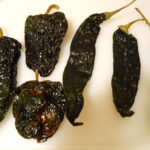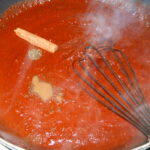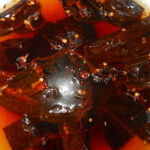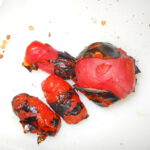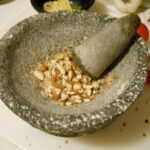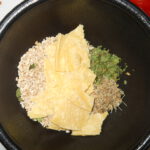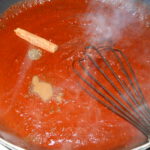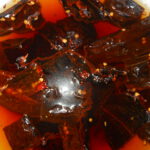Mole Navarro en la Cocina
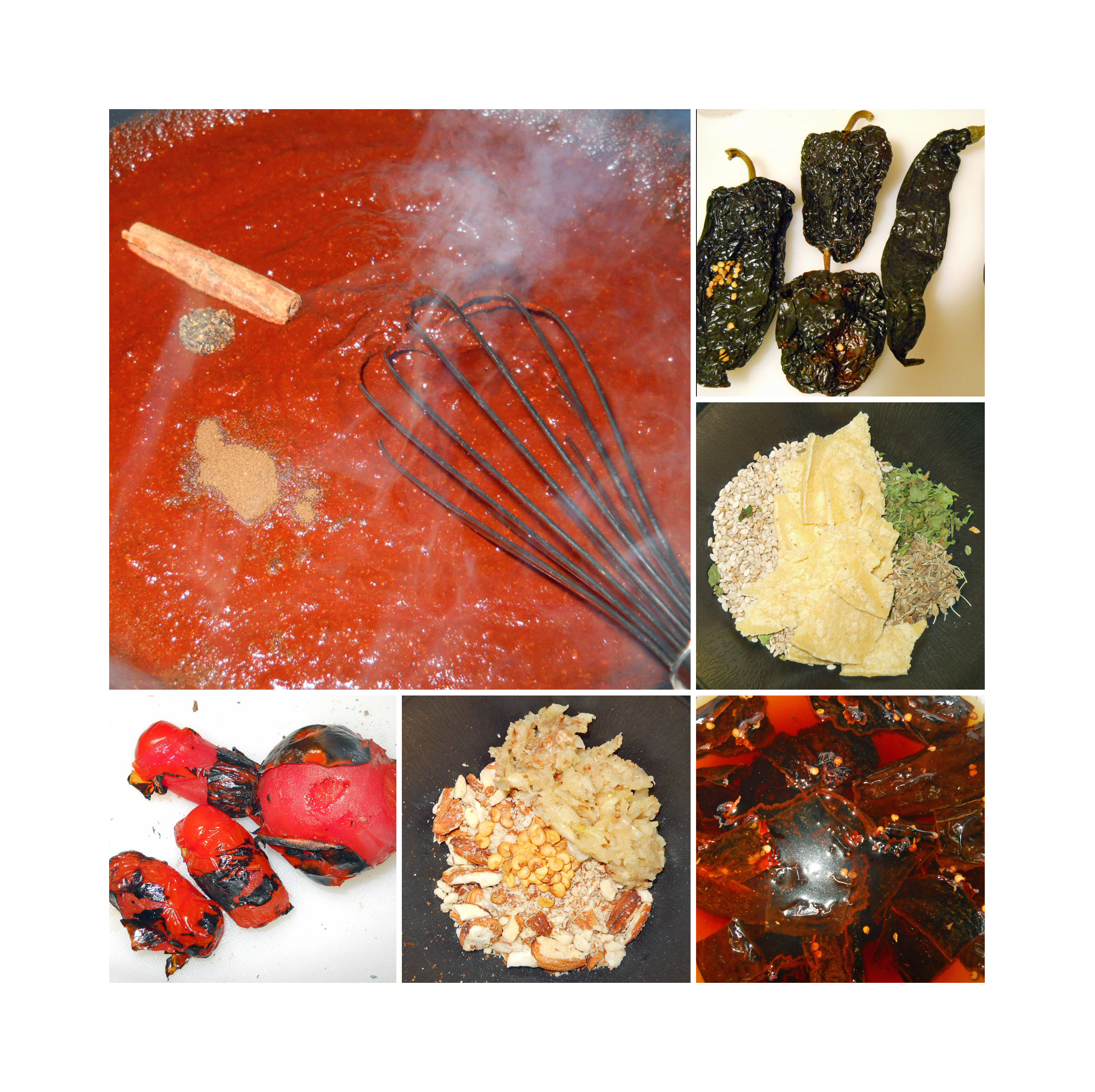 This week’s post features guest blogger Emiliano Calderon, a staff member at Casa Navarro State Historic Site, located in downtown San Antonio.
This week’s post features guest blogger Emiliano Calderon, a staff member at Casa Navarro State Historic Site, located in downtown San Antonio.
La Cocina en el Bolisillo No. 1. Antonio Vanegas Arroyo, 1913. [TX716 .M4 C675 no. 1].
by Emiliano Calderon
As a follow up to Salsa Navarro, our successful collaboration with the UTSA Libraries Special Collections last summer, the Staff at Casa Navarro and I really wanted to develop a program around historic foodways and the holidays. I figured Mole would be an appropriate choice since I remember Mole being served with leftovers from both Thanksgiving and Christmas as a child. I was not familiar at all with the history of Mole or the complex process used to make it, however, it turned out to be relatively simple despite the many ingredients and cooking methods used to make the sauce.
Because I wanted to make a local connection to Casa Navarro State Historic Site, I selected a recipe from a series of cookbooks that was widely distributed called La Cocina en el Bolsillo. As published in a previous blog entry by Juli McLoone, the book was being sold at a San Antonio store in 1897 according to an advertisement published in a Spanish language newspaper called El Regidor. Looking further into this advertisement and the newspaper it was published in, I managed to find some very interesting information on the bookseller (but I am saving this for a future blog entry).
The Mole Poblano recipe I chose from La Cocina en el Bolsillo No.1 read as follows:
Mole Poblano
Después de bien limpio el guajolote se divide en raciones regulares, las cuales se fríen en crudo.
Se desvena libra y media de chiles mulatos y pasillas; se ponen a desflemar en agua y se muelen. En un traste que esté bien seco; se tuestan dos onzas de ajonjolí, un poco de cilantro seco, una tortilla y un poco de anís. Se fríen en Manteca dos onzas de almendras dulces hasta que se doren, y unas pocas pepitas del mismo chile con unos dientes de ajo, todo esto se muele, lo mismo que un puño de tomates cocidos. En seguida se fríe el chile y las especias molidas con los tomates, en una cazuela grande, agregándole un polvo de clavo, canela y pimiento. Una vez refrito todo esto se le echa el agua respectiva y un pedazo de jengibre.
Mole Poblano
After cleaning the turkey, it should be divided in normal rations, which should be fried.
Clean out the seeds of pound and a half of mulato and pasilla chilies; Soak the peppers in hot water and grind them. In a well-dried pan, toast two ounces of sesame seeds, some dry cilantro, one tortilla and a little bit of anise. Fry two ounces of sweet almonds in lard until golden brown, and some seeds from the same peppers, with some garlic cloves, and grind everything with a handful of cooked tomatoes. Afterwards, fry the peppers and the ground spices with the tomatoes in a big casserole, adding clove powder, cinnamon and black pepper. Once refried, add water as needed and a piece of ginger.
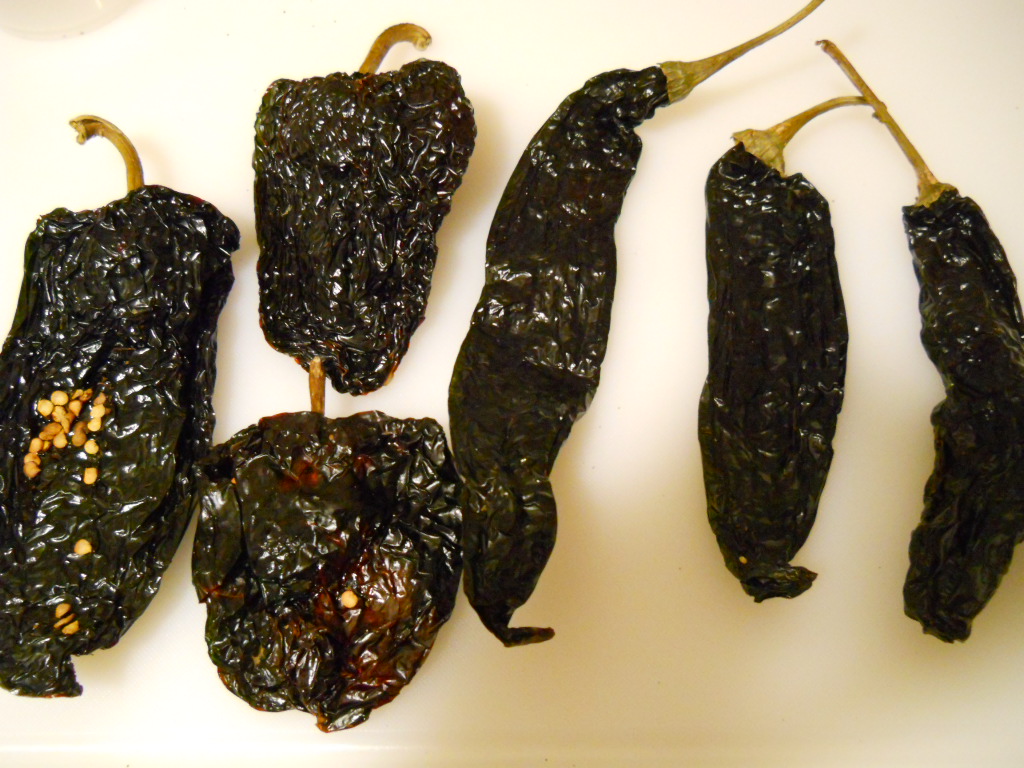
The first two attempts I had made at making Mole Poblano from the recipe were mostly unsuccessful since I could not figure out a good portioning for the ingredients. The only cooking measurements given are for the peppers, sesame seeds, and almonds. So, I consulted Diana Kenedy’s Essential Cuisines of Mexico to settle on a portioning for the remaining ingredients of spices, fruit, peppers and nuts.
I set aside an entire rainy evening to cook the Mole, this time purchasing my ingredients in bulk in order more easily correct any errors in the cooking process. I began by cutting the seeds and stems out of the dried Ancho/Mulato and Pasilla peppers and set the seeds aside for later. I placed the seeded and stemmed peppers in salted warm water and let them soak.
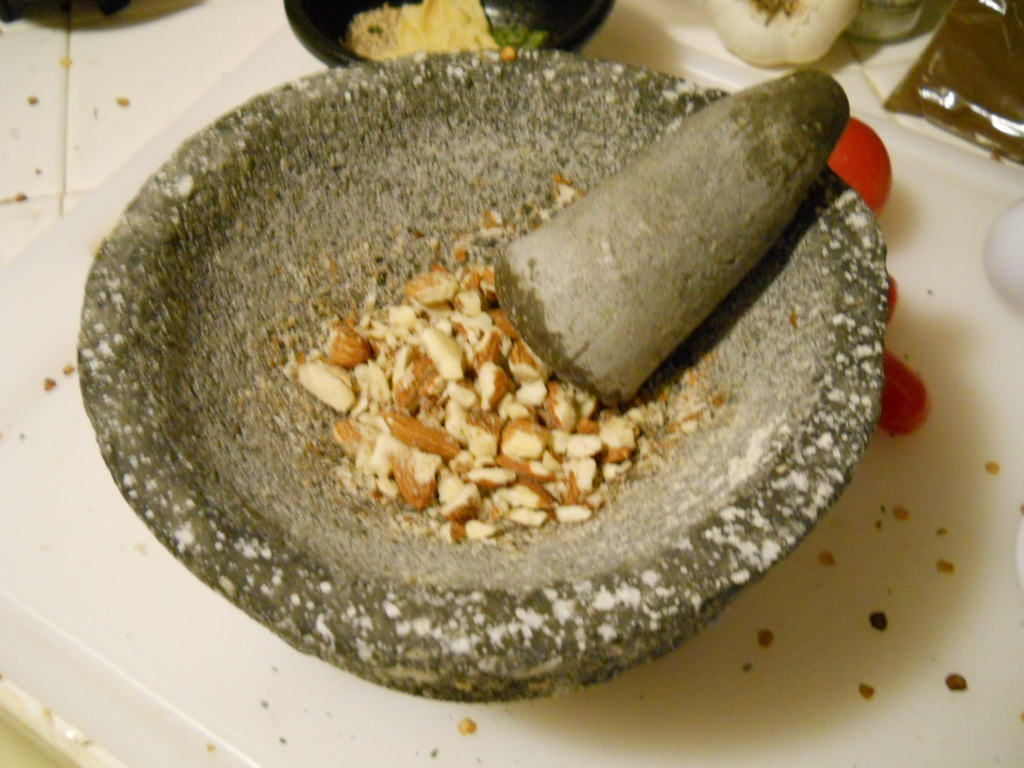
Since the peppers should be soaked for thirty minutes, I began preparing the seeds, fruit and spices by portioning them in separate bowls according to the manner in which they would be cooked: all ingredients to be toasted in one bowl, all those to be fried in another, and those to be roasted in the final bowl. I started out by toasting the sesame seeds, dry cilantro, corn tortilla and anise seeds on the stove top. After, toasting, I took approximately ¼ of the sesame seeds and set them aside, leaving the remainder of the ingredients to cool. After cooling I placed the toasted ingredients in a coffee mill and ground them into a powder consistency that would be easy to mix with the peppers later on.
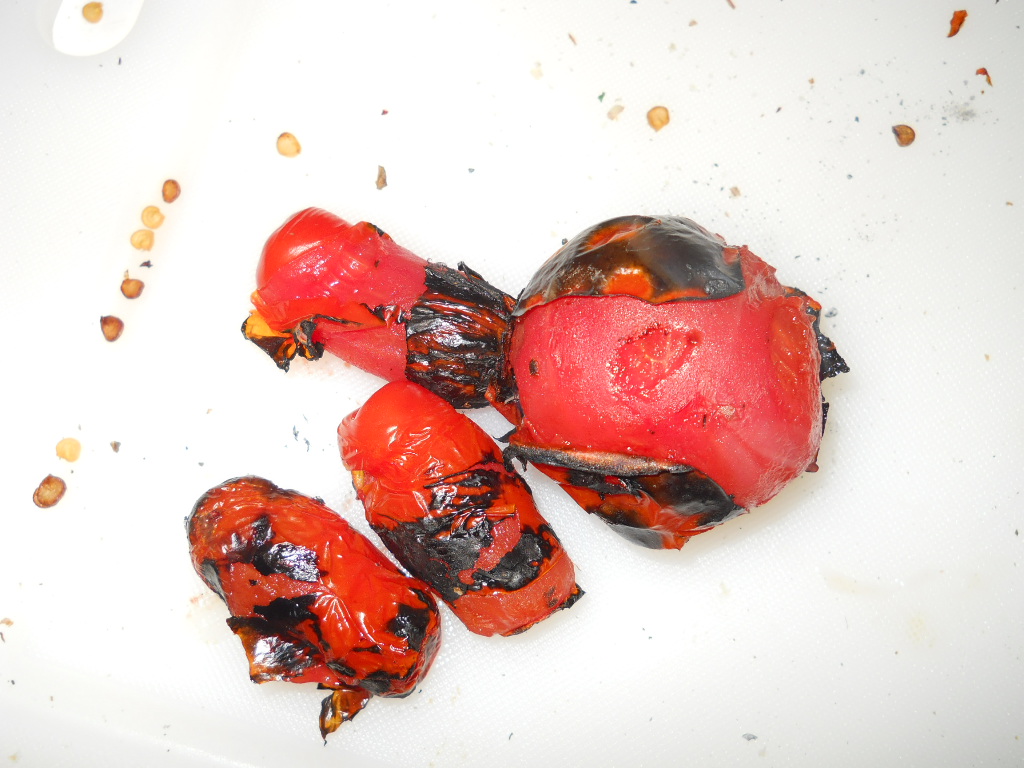
Following this, I crushed the almonds, garlic cloves, and some of the pepper seeds I had saved earlier in a Molcajete and fried them in olive oil until golden brown. I placed the ingredients in the same bowl as the ingredients that had been previously ground in the coffee mill. After, I roasted three tomatoes I had harvested from the Casa Navarro garden over an open flame, let them cool, peeled them and placed them in a blender.
By this time, the 30 minute soaking period for the peppers was complete. I thoroughly strained the peppers and placed about half of them into the blender along with the tomatoes, half the toasted ingredients, half the fried ingredients and one cup of Chicken broth. I proceeded to blend everything. I added the remainder of the ingredients into the blender little by little allowing a paste like consistency to develop.
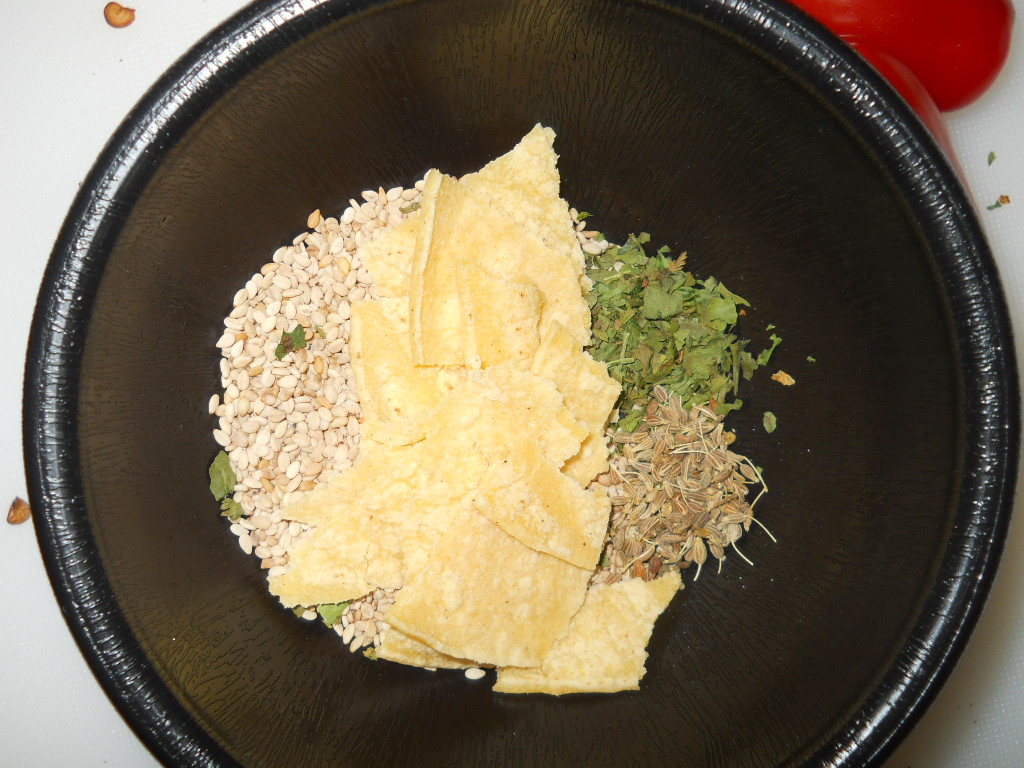
I placed the Mole paste in a large saucepan over medium to low heat and added another cup of Chicken broth and let the mixture simmer while stirring occasionally so as to prevent sticking to the bottom of the pan. Approximately ten minutes later I added the ground clove, cinnamon, and peppercorn to the Mole sauce and proceeded to simmer for another ten to fifteen minutes until oil was visibly pooling at the top of the sauce.
The most prevalent taste from the Mole was without doubt the Mulato and Pasilla peppers, which was the ultimate goal of the portioning. The consistency of the sauce came out relatively thick compared to Moles I had tasted in the past. Likewise, it was interesting to have produced a Mole that did not taste sweet like the many we are accustomed to buying at restaurants and stores.
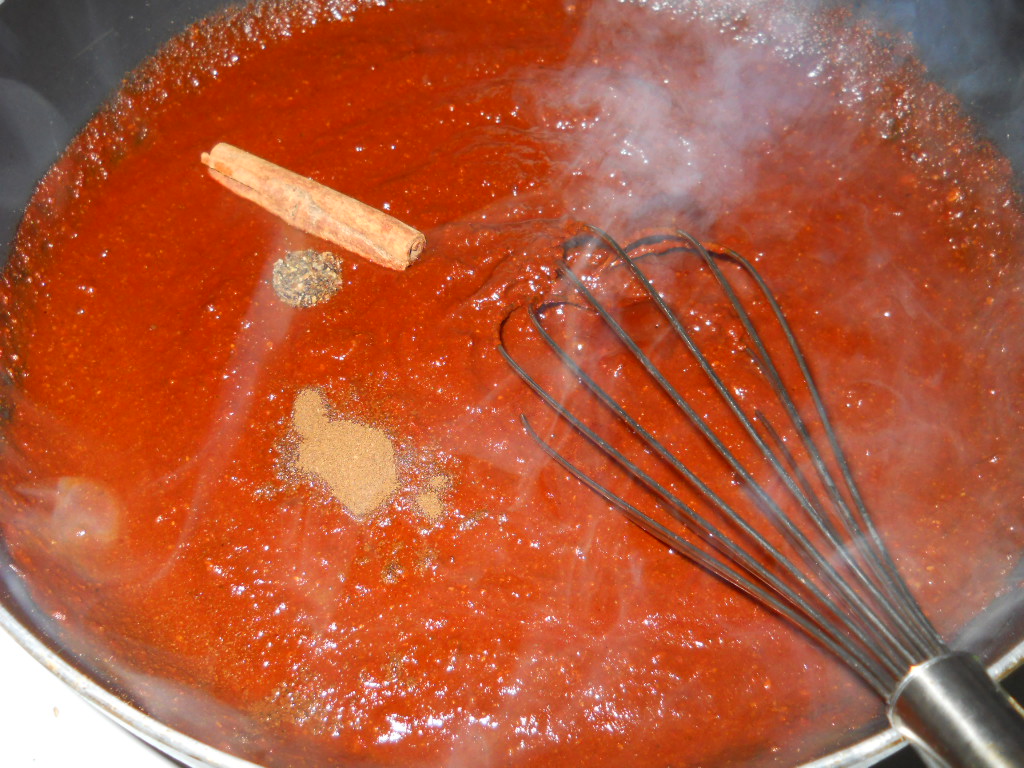
If you will be attempting to make Mole using this recipe or another, I have three tips/suggestions:
- Purchase your ingredients in bulk. Mistakes made in the kitchen can be corrected more easily.
- Be organized. Separate your ingredients into portions for frying, toasting, soaking, and roasting before you begin.
- Take your time. Each time I have made Mole from scratch it has taken approximately 1-2 hours to do, it is difficult to rush the process so I would recommend setting aside an entire morning or evening for this.
Casa Navarro is located at 228 South Laredo Street in downtown San Antonio, along the Texas Independence and Hill Country Trail Regions.

